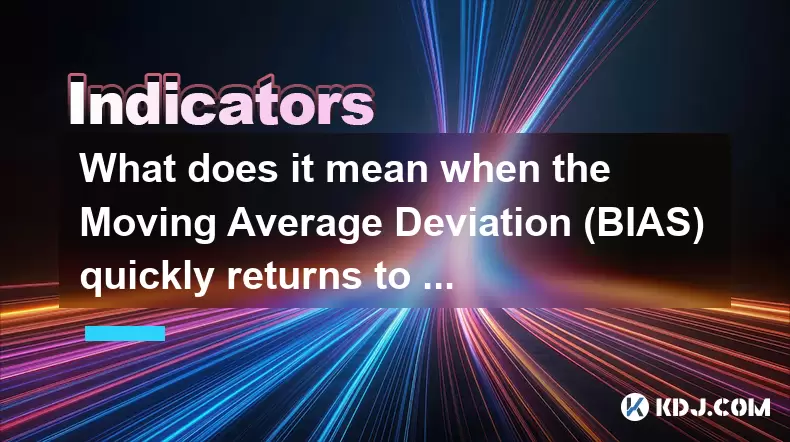-
 Bitcoin
Bitcoin $115100
-1.30% -
 Ethereum
Ethereum $4758
-1.70% -
 XRP
XRP $3.027
-2.19% -
 Tether USDt
Tether USDt $0.9998
-0.01% -
 BNB
BNB $883.2
-1.42% -
 Solana
Solana $204.0
2.62% -
 USDC
USDC $1.000
0.02% -
 Dogecoin
Dogecoin $0.2371
-0.97% -
 TRON
TRON $0.3612
-1.24% -
 Cardano
Cardano $0.9128
-2.19% -
 Chainlink
Chainlink $26.13
-3.93% -
 Hyperliquid
Hyperliquid $44.73
0.90% -
 Sui
Sui $3.715
-0.56% -
 Stellar
Stellar $0.4153
-2.41% -
 Ethena USDe
Ethena USDe $1.000
-0.04% -
 Bitcoin Cash
Bitcoin Cash $588.9
-2.06% -
 Avalanche
Avalanche $25.91
3.27% -
 Hedera
Hedera $0.2525
-1.45% -
 Litecoin
Litecoin $120.9
-1.35% -
 UNUS SED LEO
UNUS SED LEO $9.607
0.30% -
 Toncoin
Toncoin $3.382
-0.31% -
 Shiba Inu
Shiba Inu $0.00001329
-0.38% -
 Uniswap
Uniswap $11.38
-1.67% -
 Polkadot
Polkadot $4.222
2.83% -
 Aave
Aave $354.5
4.93% -
 Dai
Dai $0.0000
0.00% -
 Bitget Token
Bitget Token $4.704
-1.49% -
 Cronos
Cronos $0.1565
1.83% -
 Ethena
Ethena $0.7463
1.55% -
 Monero
Monero $265.8
-0.39%
What does it mean when the Moving Average Deviation (BIAS) quickly returns to zero?
A rapid BIAS return to zero signals market stabilization after a sharp move, often indicating profit-taking or mean reversion, especially when confirmed by volume and RSI.
Aug 13, 2025 at 11:36 am

Understanding the Moving Average Deviation (BIAS)
The Moving Average Deviation (BIAS) is a technical indicator used in cryptocurrency trading to measure the difference between the current price of an asset and its moving average, typically expressed as a percentage. This metric helps traders identify overbought or oversold conditions in the market. When the BIAS value is positive, it indicates that the price is trading above its moving average, which may suggest bullish momentum. Conversely, a negative BIAS value means the price is below the moving average, potentially signaling bearish sentiment.
The formula for BIAS is:
BIAS = (Current Price - Moving Average) / Moving Average × 100
Traders commonly use short-term moving averages like 5-day, 10-day, or 20-day periods to calculate BIAS for responsive signals in fast-moving crypto markets. The usefulness of BIAS lies in its ability to highlight deviations from average price behavior, which may precede reversals or corrections.
What Happens When BIAS Quickly Returns to Zero?
When the BIAS quickly returns to zero, it indicates that the price has rapidly converged back toward its moving average after a period of divergence. This often occurs following a sharp price spike or plunge, where extreme market sentiment—such as FOMO (fear of missing out) or panic selling—drives the price far from its average. The swift return suggests that the market is correcting itself, and the abnormal price movement is being neutralized.
This rapid convergence can be interpreted as a sign of market stabilization. For instance, if Bitcoin surges 15% above its 10-day moving average (resulting in a high positive BIAS) and then drops sharply back to the moving average within one or two candlesticks, the BIAS line on the chart will plunge toward zero. Such behavior may reflect profit-taking by short-term traders or the reassertion of longer-term trend discipline.
Implications for Crypto Traders
A rapid return of BIAS to zero can signal several potential market dynamics. One key interpretation is mean reversion—the idea that prices tend to return to their average over time. In highly volatile assets like cryptocurrencies, this phenomenon is common. When BIAS collapses quickly to zero, it may suggest that the overextended condition has been resolved, reducing the likelihood of immediate continuation in the prior direction.
Traders might use this signal to:
- Close short-term long positions if the BIAS was highly positive and now reverts.
- Avoid entering new trades until a new trend is confirmed, as the market may enter a consolidation phase.
- Watch for volume patterns during the reversion; high volume on the return to zero strengthens the signal of a genuine correction.
It's also important to consider the timeframe. On a 1-hour chart, a quick BIAS return may reflect intraday noise. On a daily chart, the same movement could indicate a significant shift in market psychology.
How to Monitor BIAS in Trading Platforms
To effectively track BIAS, traders need to set it up correctly on their preferred cryptocurrency trading platform, such as TradingView, Binance, or Bybit. Here’s how to do it step by step:
- Open the chart for the cryptocurrency pair of interest (e.g., BTC/USDT).
- Click on the “Indicators” button, usually located at the top of the chart interface.
- Search for “BIAS” in the indicator library. If not available directly, manually calculate it using the formula.
- Add a moving average (e.g., 10-period SMA) to the chart.
- Create a custom indicator script with the formula: (close - sma(close, 10)) / sma(close, 10) 100*.
- Apply the script and adjust the moving average period as needed.
- Observe how the BIAS line behaves relative to price action and its zero baseline.
Some platforms allow saving custom templates, so you can reuse the BIAS setup across different assets. Ensure the BIAS is displayed in a separate pane below the price chart for clarity. Adjust colors to highlight positive values in green and negative in red for quick visual interpretation.
Combining BIAS with Other Indicators
Using BIAS in isolation can lead to misleading signals, especially in trending markets where prices may remain above or below the moving average for extended periods. To improve accuracy, combine BIAS with complementary tools:
- Relative Strength Index (RSI): Helps confirm overbought or oversold conditions alongside BIAS. If BIAS returns to zero while RSI exits overbought territory (e.g., drops below 70), it strengthens the reversal signal.
- Volume indicators: A spike in trading volume during the BIAS return to zero adds credibility to the correction.
- MACD (Moving Average Convergence Divergence): Can validate whether momentum is shifting in line with the BIAS movement.
- Support and resistance levels: If the BIAS returns to zero near a known support or resistance zone, the confluence increases the probability of a price reaction.
For example, if Ethereum’s price rises sharply above its 20-day MA, creating a BIAS of +12%, and then falls back to the MA with strong volume and RSI dropping from 75 to 58, the combined signals suggest a likely continuation of range-bound or bearish price action.
Common Misinterpretations of BIAS Reversion
A fast return of BIAS to zero does not always mean a trend reversal. In strong trending markets, prices can overshoot the moving average and snap back without changing direction. For instance, during a powerful bull run, Bitcoin might briefly spike above its 10-day MA, trigger a high BIAS, then return to the MA before resuming upward. In this case, the BIAS reversion acts as a pullback, not a reversal.
Another pitfall is ignoring the magnitude of the initial deviation. A BIAS of +5% returning to zero is less significant than a +20% BIAS collapsing. The latter often carries more weight and may trigger stronger corrective waves. Additionally, using inappropriate moving average lengths can distort BIAS readings—shorter periods increase sensitivity, while longer ones smooth out noise but lag behind price.
Frequently Asked Questions
What does a BIAS value of zero indicate about market sentiment?
A BIAS value of zero means the current price is exactly at the moving average. This often reflects neutral sentiment, where neither buyers nor sellers are gaining significant control. It may precede a breakout or consolidation phase.
Can BIAS be used effectively in sideways cryptocurrency markets?
Yes. In ranging markets, BIAS oscillates around zero, making it useful for identifying short-term extremes. Traders can sell when BIAS reaches high positive values and buy when it hits low negative values, assuming the range holds.
How does the choice of moving average affect BIAS interpretation?
A shorter moving average (e.g., 5-day) makes BIAS more sensitive to price changes, generating frequent signals. A longer average (e.g., 50-day) produces smoother, less frequent signals that reflect broader trends. The choice depends on the trader’s strategy and timeframe.
Is BIAS more reliable on higher timeframes like daily charts?
Generally, yes. BIAS signals on daily or weekly charts are less prone to noise and false moves compared to 5-minute or 15-minute charts. They align better with sustainable price movements and institutional trading activity.
Disclaimer:info@kdj.com
The information provided is not trading advice. kdj.com does not assume any responsibility for any investments made based on the information provided in this article. Cryptocurrencies are highly volatile and it is highly recommended that you invest with caution after thorough research!
If you believe that the content used on this website infringes your copyright, please contact us immediately (info@kdj.com) and we will delete it promptly.
- Crypto, Pepe, and Investment: Navigating the Meme Coin Mania in 2025
- 2025-08-24 06:45:29
- Crypto Market Recovery: Unearthing ROI Gems in 2025
- 2025-08-24 05:25:35
- Aave, World Liberty, and Token Allocation: Decoding the DeFi Buzz
- 2025-08-24 05:25:35
- Crypto Presales & Exchange Launches: What's Hot Now?
- 2025-08-24 05:45:17
- Meme Coin Mania: Experts Rank Layer Brett as the Top Contender
- 2025-08-24 05:45:18
- Sui Price Prediction: Will the Breakout Move Stick?
- 2025-08-24 06:05:29
Related knowledge

What does it mean when the +DI and -DI cross frequently in the DMI indicator but the ADX is flattening?
Aug 11,2025 at 03:15am
Understanding the DMI Indicator ComponentsThe Directional Movement Index (DMI) is a technical analysis tool composed of three lines: the +DI (Positive...

What does the sudden appearance of a "dark cloud cover" candlestick pattern during an uptrend indicate?
Aug 13,2025 at 11:35am
Understanding the 'Dark Cloud Cover' Candlestick PatternThe dark cloud cover is a bearish reversal pattern in technical analysis that typically appear...

What does it mean when the moving average, MACD, and RSI all send buy signals simultaneously?
Aug 11,2025 at 01:42pm
Understanding the Convergence of Technical IndicatorsWhen the moving average, MACD, and RSI all generate buy signals at the same time, traders interpr...

What does it mean when both the KDJ indicator and the RSI show overbought signals simultaneously?
Aug 13,2025 at 11:35am
Understanding the KDJ Indicator in Cryptocurrency TradingThe KDJ indicator is a momentum oscillator derived from the Stochastic Oscillator, widely use...

What does it mean when the price is trading above the SAR indicator but the red dots are densely packed?
Aug 09,2025 at 11:49pm
Understanding the SAR Indicator and Its Visual SignalsThe SAR (Parabolic Stop and Reverse) indicator is a technical analysis tool used primarily to de...

What does it mean when the candlestick chart forms a "Morning Star" but trading volume is sluggish?
Aug 12,2025 at 06:28pm
Understanding the Morning Star Candlestick PatternThe Morning Star is a three-candle bullish reversal pattern commonly observed in cryptocurrency pric...

What does it mean when the +DI and -DI cross frequently in the DMI indicator but the ADX is flattening?
Aug 11,2025 at 03:15am
Understanding the DMI Indicator ComponentsThe Directional Movement Index (DMI) is a technical analysis tool composed of three lines: the +DI (Positive...

What does the sudden appearance of a "dark cloud cover" candlestick pattern during an uptrend indicate?
Aug 13,2025 at 11:35am
Understanding the 'Dark Cloud Cover' Candlestick PatternThe dark cloud cover is a bearish reversal pattern in technical analysis that typically appear...

What does it mean when the moving average, MACD, and RSI all send buy signals simultaneously?
Aug 11,2025 at 01:42pm
Understanding the Convergence of Technical IndicatorsWhen the moving average, MACD, and RSI all generate buy signals at the same time, traders interpr...

What does it mean when both the KDJ indicator and the RSI show overbought signals simultaneously?
Aug 13,2025 at 11:35am
Understanding the KDJ Indicator in Cryptocurrency TradingThe KDJ indicator is a momentum oscillator derived from the Stochastic Oscillator, widely use...

What does it mean when the price is trading above the SAR indicator but the red dots are densely packed?
Aug 09,2025 at 11:49pm
Understanding the SAR Indicator and Its Visual SignalsThe SAR (Parabolic Stop and Reverse) indicator is a technical analysis tool used primarily to de...

What does it mean when the candlestick chart forms a "Morning Star" but trading volume is sluggish?
Aug 12,2025 at 06:28pm
Understanding the Morning Star Candlestick PatternThe Morning Star is a three-candle bullish reversal pattern commonly observed in cryptocurrency pric...
See all articles

























































































